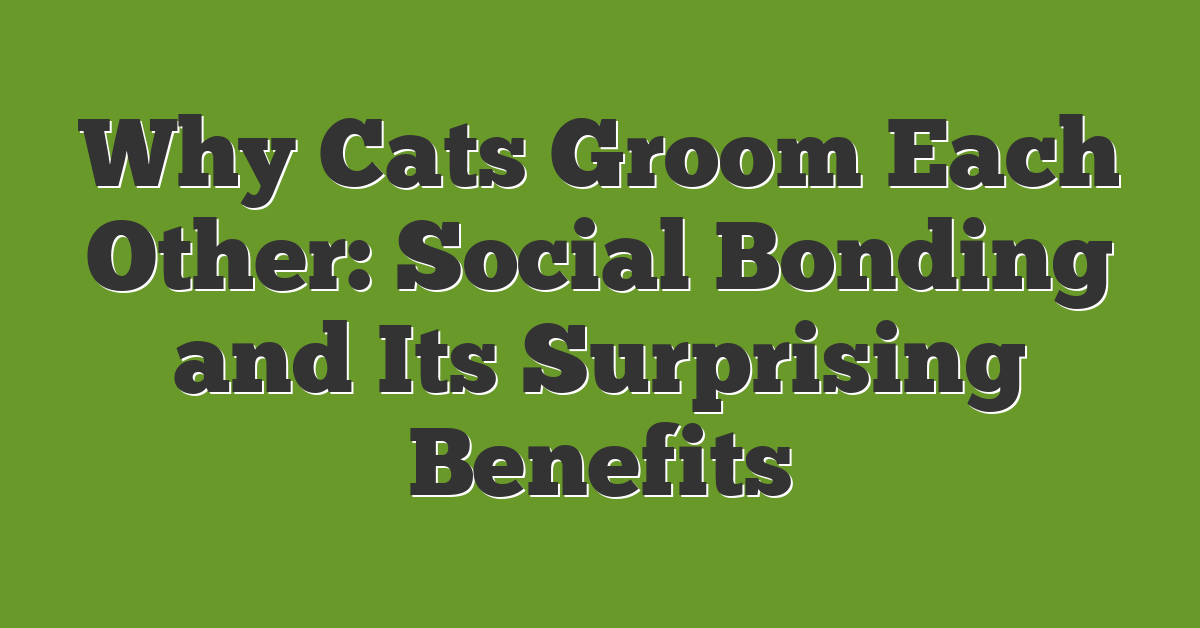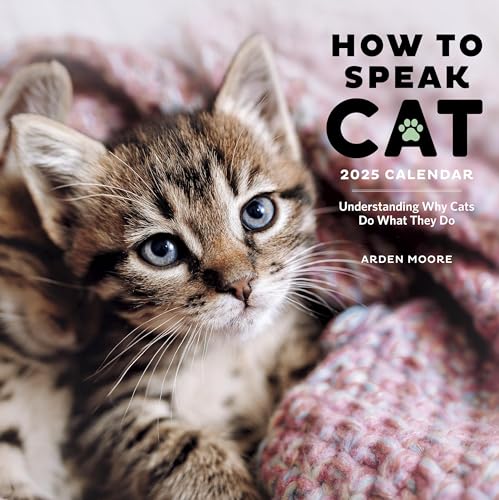As a cat lover, I’ve always been fascinated by how domestic cats interact with each other. One behavior that stands out is mutual grooming, or allogrooming. It’s more than just cleaning; it’s a vital part of their social bonding.

Watching cats groom one another reveals the depth of their relationships. It helps establish trust, reduce tension, and strengthen their social ties. Understanding this behavior gives us a glimpse into the complex social lives of our feline friends.
It’s amazing how these simple acts contribute to their overall well-being and harmony within their group. In this article, I’ll explore the reasons behind why cats groom each other and what it means for their social dynamics.
Understanding Cat Grooming Behavior
I find that cats groom each other to build strong friendships. When one cat licks another, it shows trust and love. This behavior is common in cats that live together or are close companions.
Mutual grooming also helps reduce stress. When cats groom, they release feel-good hormones. This makes them feel calm and happy, creating a peaceful group atmosphere.
Grooming plays a role in the social hierarchy. Dominant cats might groom others to show their status. This helps keep order and harmony among the group.
Additionally, grooming keeps cats clean. They remove loose fur and dirt from each other. This shared cleaning ensures all cats stay healthy and healthy.
Cats use specific signals to start grooming. A cat may gently lick another, give a soft head-butt, or slowly blink. These actions invite the other cat to join in the grooming.
Benefits of Mutual Grooming
- Strengthens Bonds: Builds trust and friendship.
- Reduces Stress: Releases calming hormones.
- Maintains Hierarchy: Reinforces social structure.
- Promotes Cleanliness: Keeps all cats tidy and healthy.
Common Grooming Behaviors
| Behavior | Meaning |
|---|---|
| Gentle licking | Showing affection and trust |
| Head-butting | Initiating grooming or greeting |
| Slow blinking | Signaling relaxation and friendliness |
By understanding these behaviors, I appreciate how grooming helps cats live happily together.
Types Of Mutual Grooming
Cats engage in different types of mutual grooming to strengthen their social bonds. Each type serves a unique purpose in their interactions.
Allogrooming
Allogrooming involves cats licking and cleaning each other. It’s a sign of trust and friendship. When cats allogroom, they remove dirt and loose fur, keeping each other clean. This behavior also releases endorphins, which make cats feel happy and relaxed. Allogrooming strengthens the relationship between cats living in the same household or group.
Allonursing
Allonursing occurs when a mother cat nurses kittens other than her own. This behavior helps kittens thrive by providing additional nutrition and warmth. Allonursing can also strengthen the bond between the mother and the kittens. It ensures that all kittens receive the care they need, promoting a healthy and cohesive family group.
Social Bonding Through Grooming
I’ve always found it fascinating how cats use grooming to connect with each other. This behavior goes beyond just keeping clean; it builds strong social ties.
Strengthening Relationships
When cats groom each other, they show trust and affection. It helps them form close friendships, especially with cats they live with or spend a lot of time around. For example, you’ll often see cats licking each other’s faces or gently nibbling their fur. These actions reinforce their bond and make their group more united.
Reducing Stress
Grooming also helps cats relax and feel safe. When a cat is groomed by another, it releases endorphins that create a sense of calm. This reduces tension and prevents conflicts within the group. On stressful days, you might notice cats spending more time grooming each other, creating a peaceful and happy environment for everyone.
Benefits Of Mutual Grooming
Mutual grooming offers several advantages for cats and their social groups.
Strengthens Social Bonds
When cats groom each other, they build strong friendships. It’s a sign of trust and affection. For example, two cats that spend time grooming are likely close companions.
Reduces Stress
Grooming releases endorphins, which make cats feel calm and happy. This behavior helps lower anxiety levels, especially during stressful situations.
Maintains Social Hierarchy
Dominant cats often groom those below them. This reinforces their status and keeps the group organized. It ensures that each cat knows its place within the hierarchy.
Promotes Cleanliness
Cats remove loose fur and dirt from each other. This keeps their coats healthy and reduces the risk of skin infections. Clean cats are healthier and more comfortable.
Enhances Group Harmony
Regular grooming sessions create a peaceful environment. They help resolve conflicts and prevent tensions from rising. A harmonious group lives together more happily.
Facilitates Communication
Grooming involves various signals like licking, head-butting, and slow blinking. These actions help cats communicate their intentions and feelings to one another.
Supports Kitten Development
Allonursing, a type of mutual grooming, involves mother cats nursing kittens other than their own. This behavior strengthens family bonds and ensures that all kittens receive care.
Mutual grooming plays a vital role in the well-being and social structure of cat groups. It fosters trust, reduces stress, maintains order, and keeps cats clean, contributing to a happy and healthy feline community.
Encouraging Healthy Grooming Interactions
I find that creating a positive environment helps cats groom each other naturally. Providing plenty of resources makes cats feel secure, which encourages bonding.
Provide Multiple Resources
Ensure there are enough food bowls, water stations, and litter boxes. This reduces competition and stress, allowing cats to focus on social interactions.
Create Safe Spaces
Set up cozy areas where cats can relax together. Comfortable spots promote trust and make grooming sessions more likely.
Introduce Cats Gradually
When introducing new cats, take it slow. Gradual introductions prevent tension, making mutual grooming a safe and enjoyable activity.
Use Positive Reinforcement
Reward cats with treats or affection when they groom each other. Positive reinforcement strengthens their desire to engage in grooming behavior.
Monitor Body Language
Watch for signs of stress or aggression. If a cat seems uncomfortable, give them space to maintain a harmonious relationship.
Schedule Regular Playtime
Interactive play builds trust and strengthens bonds. Strong relationships lead to more frequent and healthy grooming interactions.
Maintain a Clean Environment
Keep the living area clean to reduce stress and health issues. A tidy space supports overall well-being, making cats more inclined to groom each other.
By following these steps, I’ve seen cats develop strong bonds through mutual grooming, enhancing their social harmony and overall happiness.
Conclusion
Watching my cats groom each other always brings a smile to my face. It’s amazing how these simple actions build trust and create a peaceful home. I’ve seen firsthand how their bonds grow stronger through mutual grooming.
Creating a safe and stress-free environment has made their interactions even more meaningful. Providing spaces where they can relax and reducing competition has really paid off. It’s wonderful to see them happy and harmonious together.
Understanding their grooming habits has deepened my connection with my cats. I’m excited to continue fostering their friendships and enjoying the calm and joy they bring to our home.
















